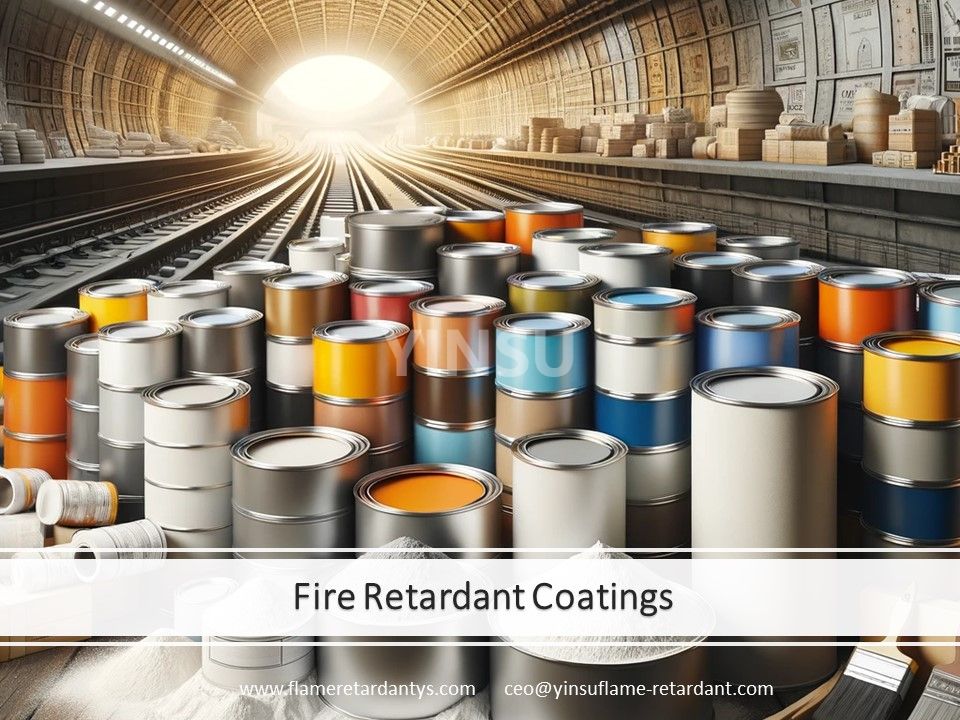- All
- Product Name
- Product Keyword
- Product Model
- Product Summary
- Product Description
- Multi Field Search
Views: 52 Author: Yinsu Flame Retardant Publish Time: 2024-05-22 Origin: www.flameretardantys.com








Introduction
Fire retardant coatings play a crucial role in enhancing the fire resistance of structures, materials, and surfaces. These coatings can significantly delay the ignition and spread of fire, providing valuable time for evacuation and response. As such, understanding the different types of fire retardant coatings and their appropriate application methods is essential for professionals in the construction, safety, and DIY realms. This article delves into the nuances of oil-based and water-based fire retardant coatings, offering practical advice for effective application.

Types of Fire Retardant Coatings
Fire retardant coatings are formulated to provide passive fire protection. They can be broadly classified into oil-based and water-based varieties, each with distinct characteristics and application environments.
Oil-Based Fire Retardant Coatings: Known for their durability and high resistance to moisture, oil-based coatings are ideal for exterior surfaces and areas exposed to harsh environmental conditions. They often require more time to dry and may emit stronger odors during application.
Water-Based Fire Retardant Coatings: These coatings are more environmentally friendly, emitting lower levels of volatile organic compounds (VOCs). Water-based coatings are easier to clean up and can be applied on both interior and exterior surfaces. However, they might be less resistant to moisture compared to their oil-based counterparts.
Application Methods
The application of fire retardant coatings varies depending on the type of coating, the substrate, and the desired level of protection. Here are some general guidelines and best practices:
Surface Preparation: Proper surface preparation is paramount. Ensure the surface is clean, dry, and free of dust, grease, or any previous coatings that may interfere with adhesion. For wooden surfaces, sanding might be necessary to create a smooth base.
Application Tools: Brushes, rollers, and sprayers are the most common tools for applying fire retardant coatings. Brushes and rollers are suitable for smaller areas and detailed work, while sprayers offer an efficient solution for larger surfaces.
Priming: Applying a primer can enhance the adhesion and efficacy of the fire retardant coating. Some surfaces, particularly porous ones, may benefit significantly from priming before the application of the fire retardant layer.
Coating Application: Apply the coating evenly across the surface, following the manufacturer’s recommended thickness and application technique. Multiple thin layers are often more effective than a single thick layer, allowing for better drying and adherence.
Drying and Curing: Adhere to the recommended drying times between coats and before exposing the coated surface to conditions that might affect its performance. Oil-based coatings generally require longer drying times than water-based alternatives.
Inspection and Maintenance: After application, inspect the coating for any missed spots or uneven areas. Regular maintenance checks are crucial to ensure the longevity and effectiveness of the fire retardant protection.

Best Practices
Always follow the manufacturer's instructions and safety guidelines when applying fire retardant coatings.
Use appropriate personal protective equipment (PPE), including gloves, masks, and eye protection, to safeguard against potential hazards.
Ensure adequate ventilation, especially when working with oil-based coatings, to minimize exposure to harmful vapors.
Conduct a patch test in an inconspicuous area to assess the coating’s compatibility with the substrate and its performance under fire exposure.

Conclusion
Fire retardant coatings are indispensable in the quest for fire safety, offering an additional layer of protection for various materials and structures. By choosing the right type of coating and adhering to proper application techniques and best practices, professionals and DIY enthusiasts can effectively enhance fire resistance. Whether opting for oil-based or water-based variants, the key to successful application lies in meticulous preparation, precise execution, and ongoing maintenance.
"Protect your projects from the threat of fire with our expert guide on the application techniques and best practices for fire retardant coatings."